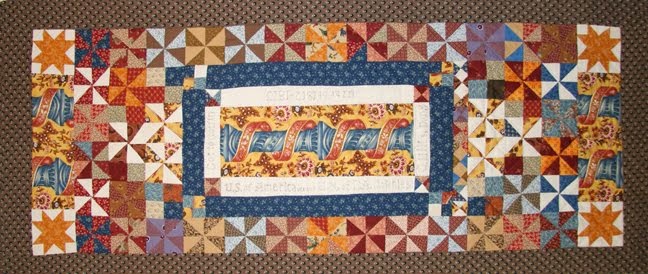The iconic eight-pointed star quilt block is undoubtedly the most widespread pattern (other than simple nine-patches) seen in early American quilt making. Eight-pointed star quilts started appearing around 1780 and after 1830 countless variations of star patterns were being made. Indeed the graphic of an eight-pointed star is nearly synonymous with American folk-art.
Our guest blogger today is a professional quilter and author who is known for her innovative drafting techniques and creative use of the eight-pointed star - Mary Knapp.
Many of the block patterns used to create quilts today, were first developed many decades ago using very simple tools but accurate techniques. Consider this design process evolving in the early 1800’s, just prior to the War of 1812.
I have chosen the eight-pointed star pattern to explore and develop this concept into easily designed blocks. The tools I used are ones that were available to designers in the 1800’s. I used a straight-edge, a pencil and my imagination. My designs are all based on one commonality: the 45° diamond patch that is repeated and grows into symmetrical designs.
One to several of these blocks would serve as a focal point on a background of whole cloth or simple pieced blocks. The resulting patterns were pieced with combinations of plain color and print fabric.
The designers in earlier times named their blocks with the same serendipity that many of us use today. What they observed in nature and everyday life played a role in the creative process. It is possible that a piece of china or the design made by cracks in the mud evolved into a descriptive term for a quilt block. Birds, trees, and flowers figure prominently in the names of many blocks. Other sources could have come from a basket carried by a friend or viewing a formation of marching soldiers.
Then as now, let your imagination should be your guide to produce a piece of work that will be cherished for decades.





















